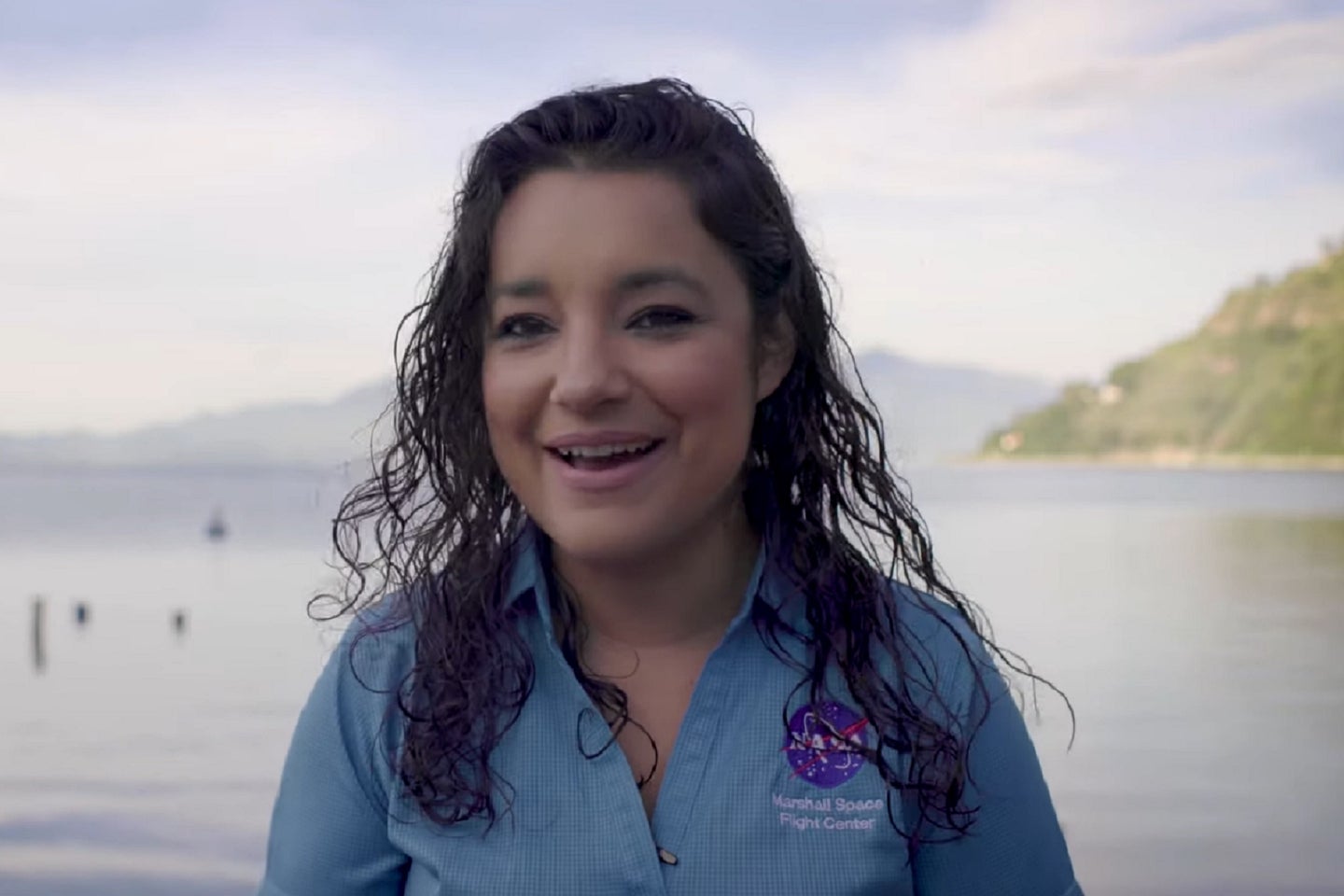This scientist uses data from space to map clean water across the Americas
NASA’s Africa Flores-Anderson is bringing technology home to western Guatemala.

Breakthrough is a short film anthology and educational outreach program from the Science Friday Initiative and Howard Hughes Medical Institute (HHMI) Tangled Bank Studios. This short documentary series follows women working at the forefront of their scientific field, blending deeply personal stories with innovative research and discoveries. Watch the latest season of the film series at BreakthroughFilms.org.
Growing up in rural Guatemala, Africa Flores-Anderson was used to seeing unregulated agricultural runoff and polluted waterways. She thought that all landscapes in her country were laden with contaminated waters. When she went to live in western Guatemala where the land is less farmed, she saw for the first time healthy rivers, lakes, and forests. It was the moment Flores-Anderson decided to dedicate her life and education to environmental sciences and sustainability. To help underserved communities like the one she grew up in, Flores-Anderson focused her studies on learning how to collect and interpret satellite data across huge landscapes and waterways. “From space, I can see the forest and the condition of that forest, and I can see the river and the water quality of that river,” she says. “It completely revolutionized my world of the work I was doing.”
Today, she works as an earth scientist and regional coordinator for the SERVIR (a collaborative NASA and USAID project), where she models environmental changes in regions without science infrastructure and resources. Her work helps decision-makers visualize fire, industrial, or disaster damage, predict future risks, and influence the allocation of development funds. In addition to this work, Flores-Anderson acquired funding to monitor the water quality of Guatemala’s Lake Atitlán, a source of drinking water, fishing, irrigation, and tourism. Lake Atitlán is known for its pristine waters, but Flores-Anderson has been monitoring recurring harmful algal blooms. Using her GIS skills, Flores-Anderson is mapping the levels of cyanobacteria in the lake over time and finding correlations with agricultural activity on the lake’s banks. With these advanced tools, she wants to identify the severity of the problem and pass insights on to local authorities to allow them to save Atitlán from the fate of the degraded landscapes of her youth.
Check out the full episode here:
